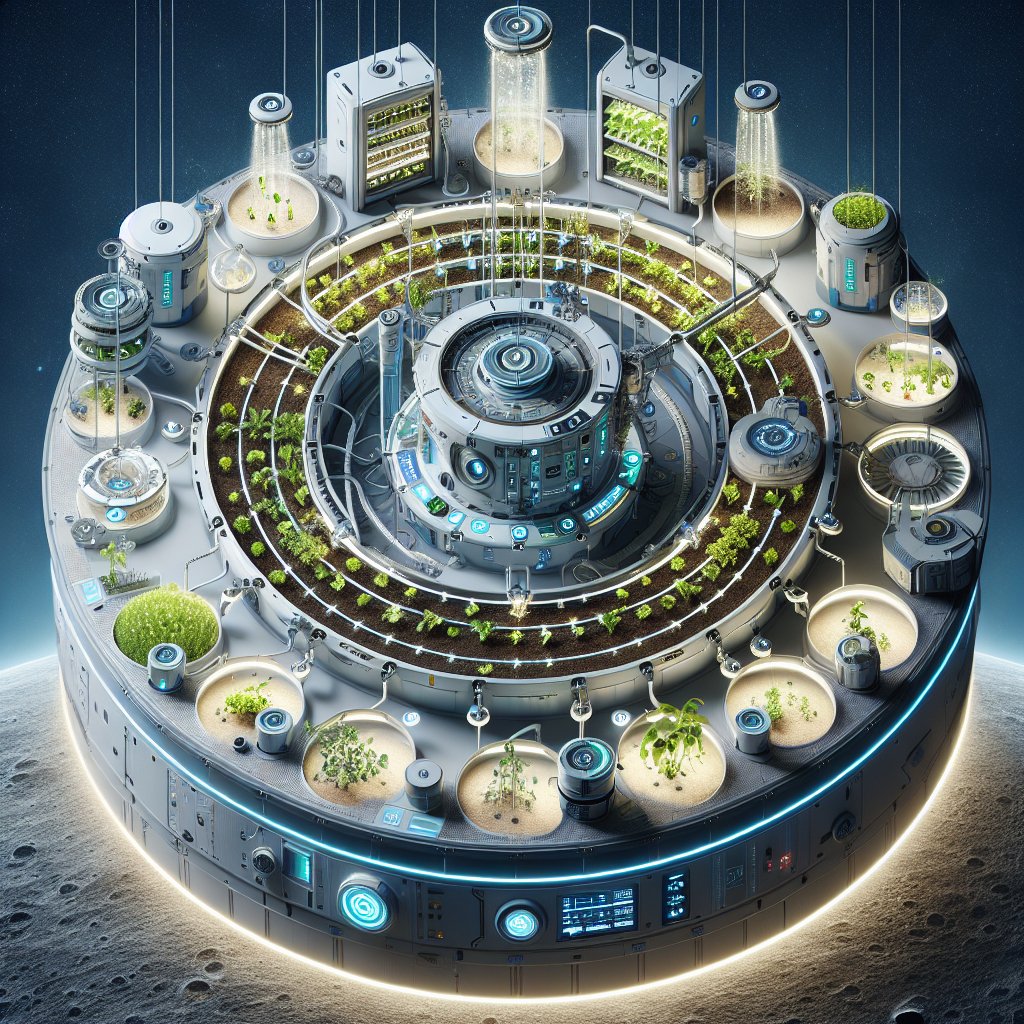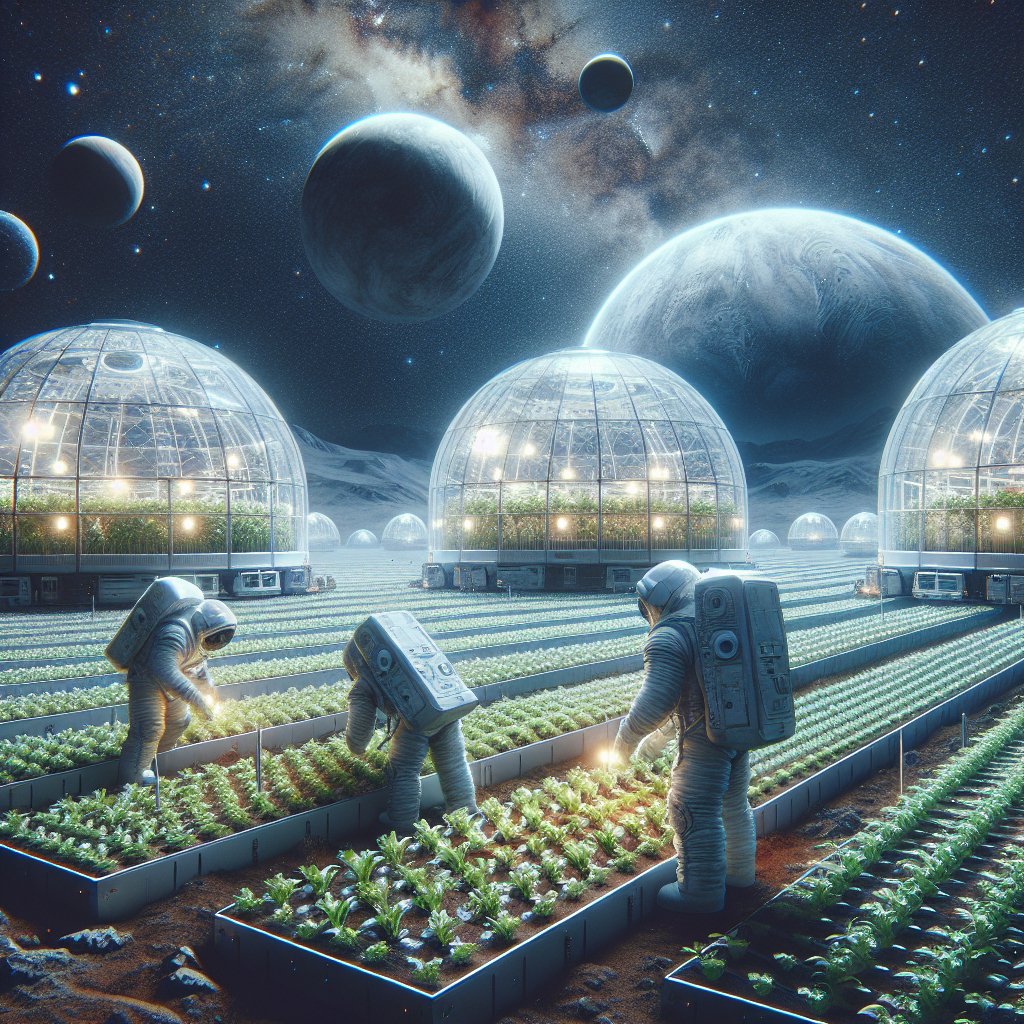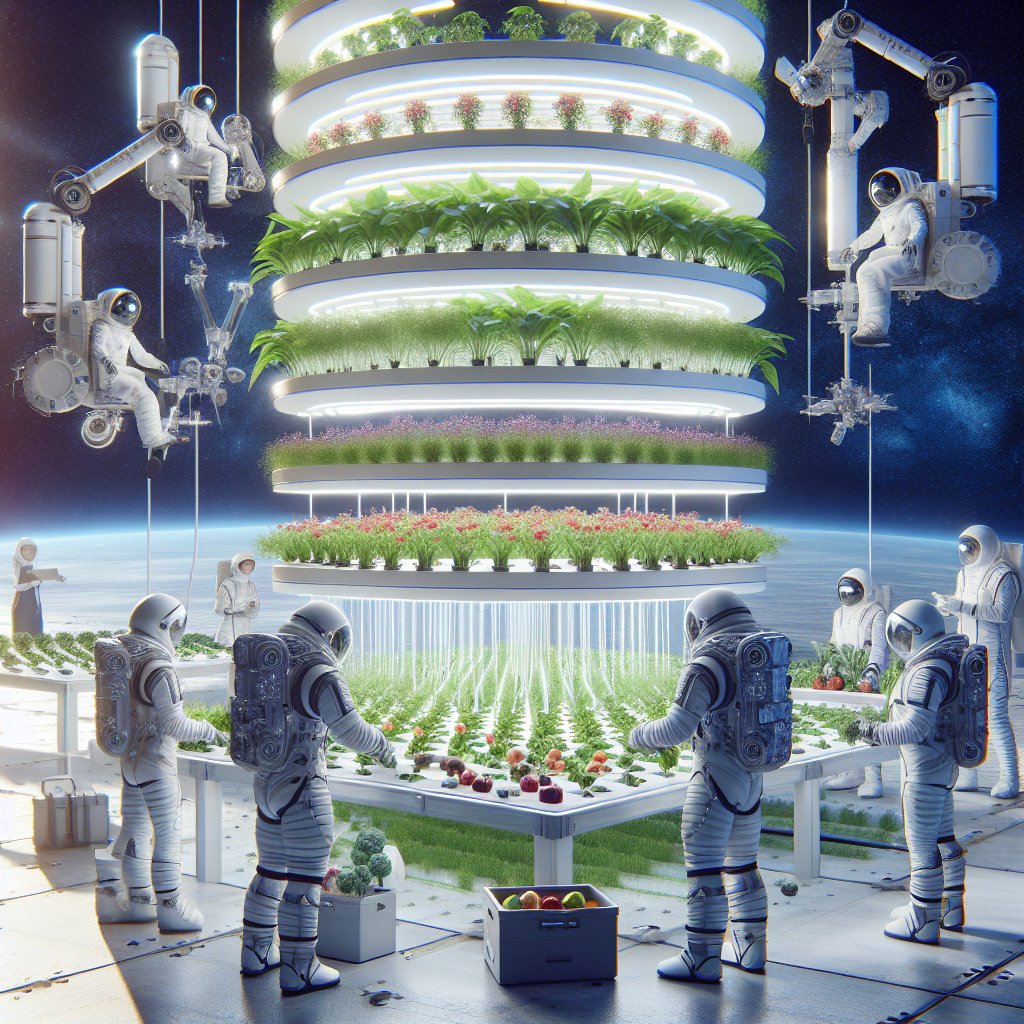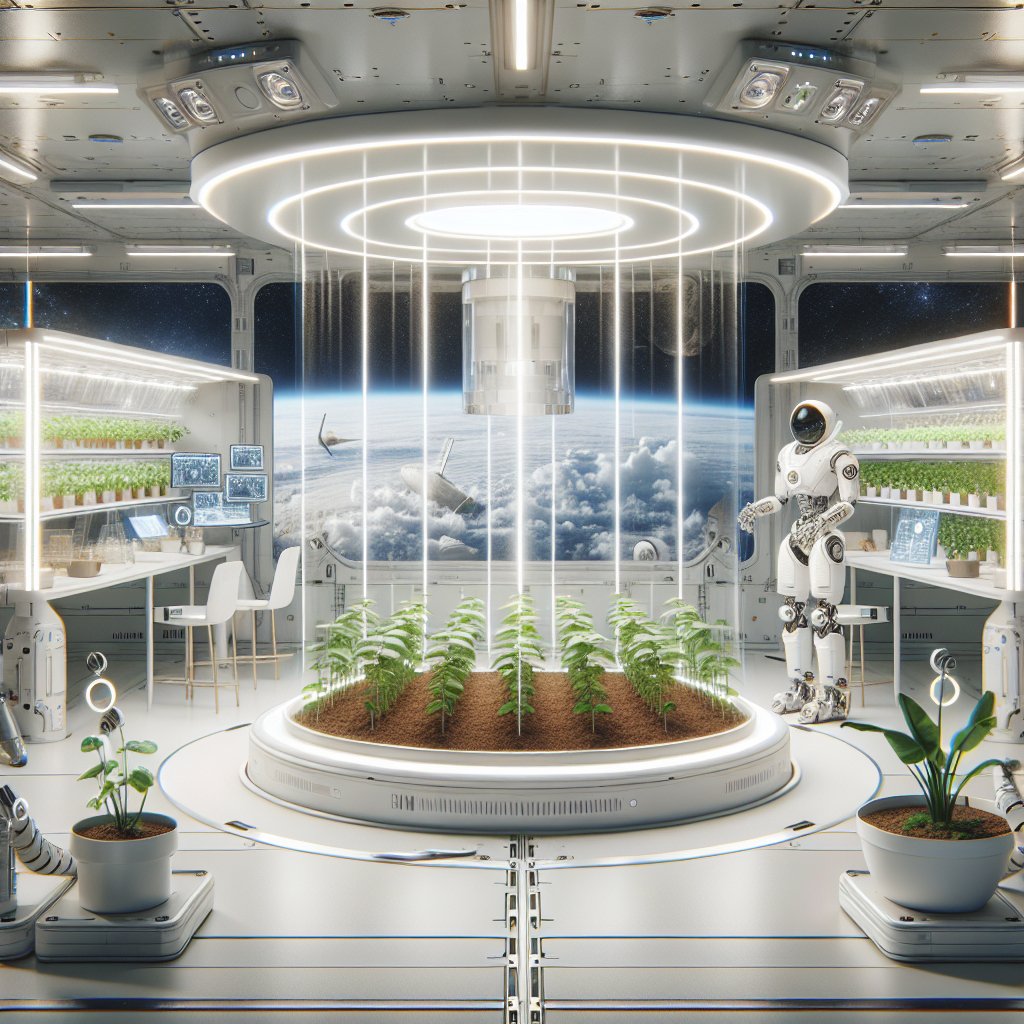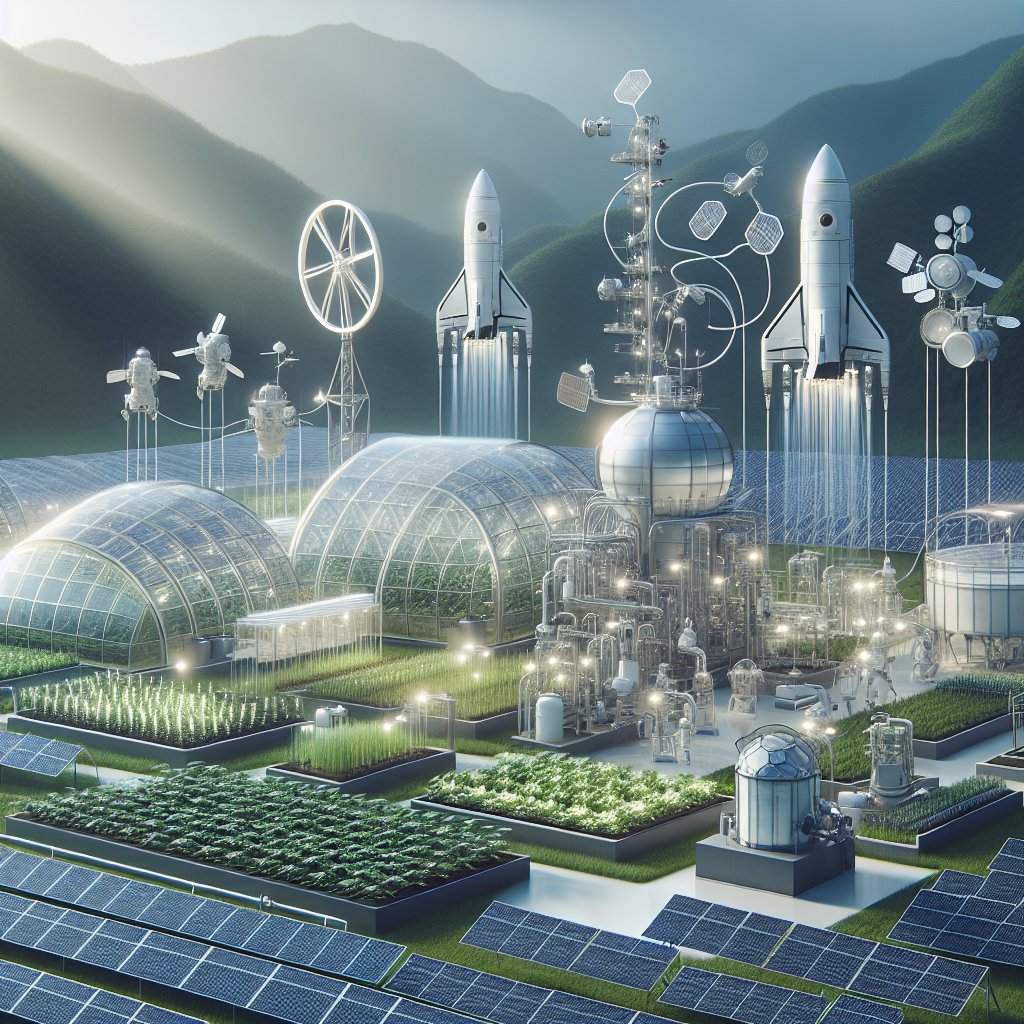Closed-loop systems for sustainable space farming represent a groundbreaking approach to addressing the challenges of food production beyond Earth. As humanity sets its sights on long-term space exploration and potential colonization of other planets, the need for efficient and sustainable agricultural practices becomes increasingly critical. This article delves into the intricacies of closed-loop systems, their applications in space farming, and the potential benefits they offer for both extraterrestrial and terrestrial agriculture.
Understanding Closed-Loop Systems
Closed-loop systems are designed to minimize waste and maximize resource efficiency by recycling materials within a controlled environment. In the context of agriculture, this means creating a self-sustaining ecosystem where nutrients, water, and energy are continuously reused. Such systems are particularly relevant for space farming, where resources are limited, and the cost of transporting supplies from Earth is prohibitively high.
Components of Closed-Loop Systems
Several key components make up a closed-loop agricultural system:
- Hydroponics and Aeroponics: These soil-less growing methods allow plants to thrive in nutrient-rich water solutions or mist, significantly reducing the need for traditional soil and enabling efficient nutrient recycling.
- Waste Management: Organic waste produced by plants and animals can be composted or converted into biogas, which can then be used as an energy source or fertilizer, closing the nutrient loop.
- Water Recycling: Advanced filtration and purification systems can reclaim water from plant transpiration and waste, ensuring a constant supply of clean water for irrigation.
- Energy Generation: Renewable energy sources, such as solar panels, can power the entire system, making it self-sufficient and reducing reliance on external energy supplies.
Benefits of Closed-Loop Systems in Space Farming
The implementation of closed-loop systems in space farming offers numerous advantages:
- Resource Efficiency: By recycling water and nutrients, closed-loop systems drastically reduce the amount of resources needed for food production, which is crucial in the resource-scarce environment of space.
- Reduced Waste: These systems minimize waste generation, ensuring that every component of the agricultural process is utilized effectively.
- Enhanced Food Security: With the ability to produce food in a controlled environment, astronauts and future space colonists can rely on a consistent food supply, reducing the psychological and nutritional challenges of long-duration missions.
- Scalability: Closed-loop systems can be scaled up or down depending on the needs of the mission, making them adaptable to various space missions and environments.
Applications of Closed-Loop Systems in Space Missions
Several space agencies and organizations are actively researching and developing closed-loop agricultural systems for use in space missions. NASA, for instance, has been at the forefront of this research, exploring various methods to cultivate food in microgravity environments.
NASA’s Veggie Project
The Veggie project is one of NASA’s most notable initiatives aimed at growing food in space. Utilizing a closed-loop hydroponic system, Veggie has successfully grown various crops, including lettuce and radishes, aboard the International Space Station (ISS). The project has provided valuable insights into plant growth in microgravity and the potential for sustainable food production during long-duration missions to Mars and beyond.
European Space Agency’s (ESA) Advanced Plant Habitat
The ESA has developed the Advanced Plant Habitat, which employs a closed-loop system to study plant growth in space. This facility uses a combination of hydroponics and advanced environmental control systems to create optimal growing conditions for plants. The data collected from this habitat will inform future agricultural practices for space missions and contribute to our understanding of plant biology in extreme environments.
Private Sector Innovations
In addition to government initiatives, private companies are also exploring closed-loop systems for space farming. Companies like SpaceX and Blue Origin are investing in technologies that could support sustainable agriculture in space. These innovations may include vertical farming systems that utilize minimal space while maximizing yield, as well as advanced bioreactors that can produce food from microorganisms.
Challenges and Future Directions
While closed-loop systems hold great promise for sustainable space farming, several challenges must be addressed to ensure their success.
Technical Challenges
Developing reliable and efficient closed-loop systems for space farming requires overcoming various technical hurdles:
- Microgravity Effects: The behavior of fluids and gases in microgravity can complicate the design of hydroponic and aeroponic systems, necessitating innovative engineering solutions.
- System Reliability: Closed-loop systems must be robust and fail-safe, as any malfunction could jeopardize food production and the health of astronauts.
- Crop Selection: Identifying which crops are best suited for growth in space environments is crucial. Research must focus on selecting plants that can thrive in limited light, space, and nutrient conditions.
Future Research Directions
To fully realize the potential of closed-loop systems in space farming, future research should focus on:
- Genetic Engineering: Developing crop varieties that are specifically engineered for space conditions could enhance yield and resilience.
- Integration with Life Support Systems: Closed-loop agricultural systems should be integrated with life support systems to optimize resource use and ensure a sustainable environment for astronauts.
- Long-Term Studies: Conducting long-term experiments in space will provide critical data on the viability of closed-loop systems and their impact on human health and nutrition during extended missions.
Conclusion
Closed-loop systems for sustainable space farming represent a vital step toward ensuring food security for future space missions. By creating self-sustaining agricultural ecosystems, we can minimize waste, maximize resource efficiency, and support the health and well-being of astronauts on long-duration missions. As research and technology continue to advance, the potential for closed-loop systems to revolutionize not only space agriculture but also terrestrial farming practices becomes increasingly apparent. The lessons learned from these systems could lead to more sustainable agricultural practices on Earth, addressing food security challenges in a world facing climate change and resource scarcity.
